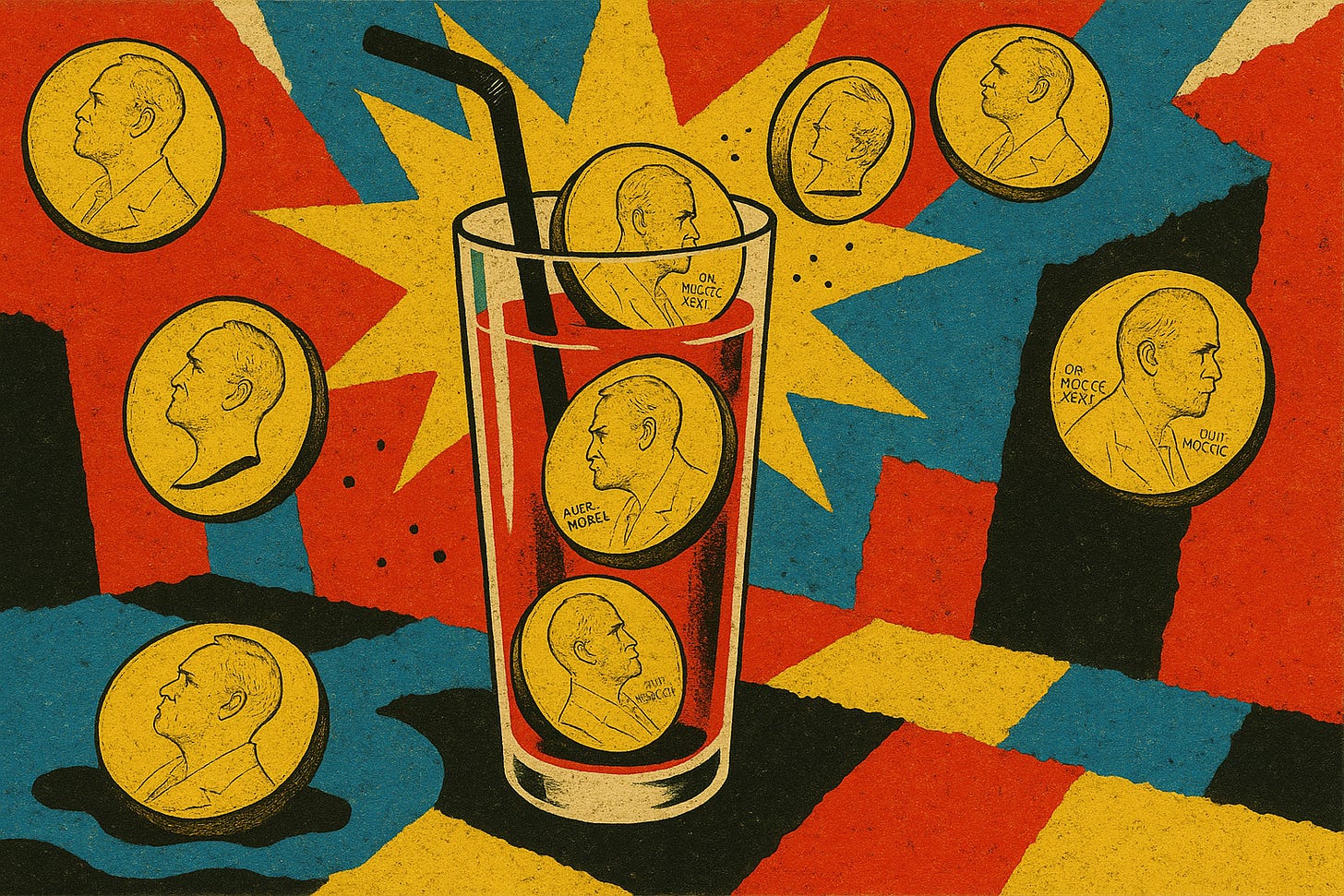👩🔬 Let’s reinvent the Nobel Prizes!
Hey folks! From physics and chemistry to medicine, the Nobel Prizes are the Oscars of science, only older and with far fewer women. It’s that time of year when science writers pretend to understand papers we’ve just googled. But beyond the jargon, the Nobels have deeper problems. Let’s talk about what’s broken and how to fix it.
It’s so 1896
Alfred Nobel supposedly didn’t like math, so mathematicians got nothing. He liked books, so writers did. Shame he wasn’t into dancing: we might’ve had a Nobel for best ballet instead. Jokes aside, computer scientists and climate researchers still have no category of their own, and the committees keep awkwardly squeezing them into Physics or Chemistry. The world moved on; the rules didn’t.
Quick fix: Give Nobels for computer science, climate, or engineering. If AI can write poetry, it deserves at least a nomination.
Three’s a crowd
Each Nobel can go to three people. That made sense when experiments involved candles and test tubes, not supercomputers and thousand-person teams. Take LIGO: hundreds of scientists detected gravitational waves, but only three names made it to Stockholm. It keeps the myth of the lone genius alive while everyone else fades into the footnotes. Teamwork makes the dream work, just not the Nobel shortlist.
Quick fix: If 1,000 people found gravitational waves, maybe all 1,000 deserve a little gold medal emoji. 🥇
Where are the women?
Since 1901, women have received just 67 Nobel Prizes (and one of those was Marie Curie twice). Take away Literature, Peace, and Economics, and only 26 women have ever won in the sciences. In 2024, all seven science laureates were men. The committees keep promising to do better, urging nominators to think “more inclusively.” But with a process sealed for 50 years, who can tell if anything’s actually changing?
Quick fix: This problem runs deeper than the Nobel itself; it’s still baked into science. A simple start: widen the nominator pool to include early-career researchers and professional societies.
Since we’ve now fixed all the serious problems, let’s tackle the biggest one: the ceremony. It’s painfully dull. The solution? Take notes from Eurovision. Picture it: each country presenting its best discovery with lasers, synth beats, and scientists awkwardly dancing. Add ABBA holograms, and suddenly the Nobel Prize is a sell-out event ready for the future!
And that’s it for today! Thanks for reading! If you enjoy the newsletter, share it with a friend. And if you really enjoyed it, consider upgrading to a paid subscription: it helps support my work and means a lot.
Elia Kabanov is a science writer covering the past, present and future of technology (@metkere)
Cover art: Elia Kabanov feat. DALL-E.


